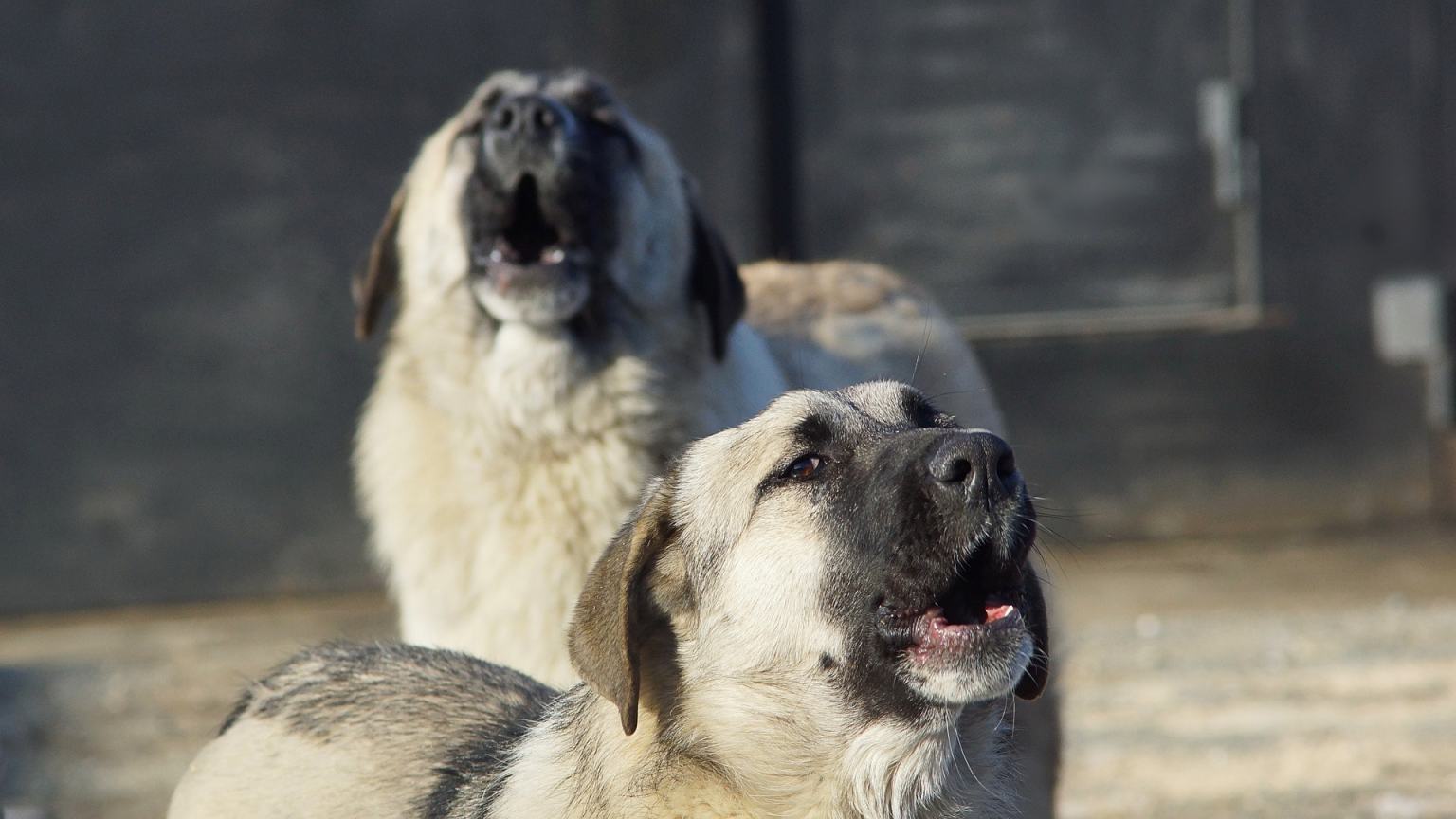How To Make Your Dog To Howl?
Dog owners always want to keep their dogs safe and hygienic. In addition to that, they try to teach their dog about human manners and train or control them with their commands. One among them is to teach dogs to howl for their non-verbal actions or cue words.
Types of howling
Howling is the most direct method for animals to communicate across great distances. A howl can convey information such as an animal’s location, predator warnings, and prey position.
As mentioned by AKC there are three Merriam-Webster definitions that effectively summarize the differences between canine communication methods.
- Howl: to utter or emit a loud, continuous doleful sound or outcry
- Bark: a dog’s typical short loud explosive howl
- Bay: to bark (as at a robber or a chased game), particularly in deep, sustained tones
Beagles frequently bay, which may be defined as a warning when prey is approaching or insight.
Why do dogs howl?
The following are the most prevalent causes of howling in dogs:
1. Interaction with Other Dogs
Wild dogs howl in groups to ensure that everyone is secure and together. Dogs howl to bring members of the pack back together or to assist lost pack members in reuniting with the rest of the pack.
2. Sending Alert Signals or Warnings
When your dog sees a stranger approaching the house (which he considers “territory), he may howl instinctively. Dogs may also howl to warn other dogs of impending danger or to simply proclaim their existence. When guarding their territory or informing pack members of a potential threat, canines may use howls as a warning to others. When hunting dogs find their prey, they frequently howl to notify each other or their human hunters.
3. Musical or other acoustic sounds
A howl is often triggered by the High-pitched sounds of a siren or a musical instrument. Because your dog is howling in reaction to the trigger sound, it will typically stop howling when the sound ceases. Hence you could give a try to trigger these sounds to make your dog howl.
4. Distress
When dogs are sick or injured, they have been known to howl for aid or to convey distress. If your dog is howling or howling more frequently then you should examine him for common injuries. You should visit your veterinarian to ensure there is no underlying medical problem.
5. Separation anxiety
If your neighbor phone to inform you that your dog is howling excessively while you are at work, it’s possible that your dog is suffering from separation anxiety. When a dog is left alone or separated from its owner, separation anxiety howling develops.
At least one additional symptom of separation anxiety, such as pacing, destruction, elimination, sadness, or other symptoms of discomfort, is generally present when this type of howling occurs. When dogs are afraid of being left alone, they may howl. If your dog is left alone in a kennel at night, he may howl more at night than he does during the day.
6. Play and Friendship
If your dog hears another dog howling, they may begin to imitate it as a kind of entertainment.
7. Attention-seeking or boredom
If a bored dog attracts attention by howling, he or he will soon learn to howl whenever they are bored or lonely. If you ignore your dog’s howls, the problem will simply become worse. Responding to their howls for attention is essentially the same as rewarding them, so they’ll do it again and again whenever they’re bored.
How to make a dog howl on command?
1. Be patient and wait for natural howling to occur
The initial step is simply to wait for the dog to howl naturally. He may start howling if other dogs in the area start barking and howling, or if he hears a specific high-pitched sound, such as a fire engine passing by.
If your dog isn’t prone to howl, try taking it to a dog park. Allowing your dog to socialize with other dogs may cause him to howl.
2. Choose a sound that your dog likes
If you want your dog to howl, play a range of songs at home and pay attention to the ones he barks or howls too.
A dog that is not prone to howling will frequently do so if it hears a specific sound or noise. Play a variety of music genres throughout the day and check whether your dog howls to any of them. You may also use your own voice as a test. Make a howling noise or begin singing loudly your favourite song. One approach that usually works is using the sound of a siren to make a dog howl. Sirens sound quite similar to a dog’s howl, which is presumably why so many dogs respond to them. Install a siren-sounding app and check whether your dog howls when he hears it.
3. Experiment with different musical instruments
Some dogs respond faster and better to certain instruments, such as the guitar or harmonica, than they do to the violin or piano. If you discover that this is the case with your dog, try playing recordings of various instruments to see which instrument your dog reacts to.
If music isn’t working, you could YouTube “dogs howling,” then show your dog some of the videos. When your dog thinks he is talking with a reel dog, he or he may howl along.
4. Howl at your dog
When you and your dog are in the same room, try imitating a canine howl if music isn’t working. A dog is likely to replicate its owner’s behavior or may just be delighted by your loud howling—and should be tempted to howl with you.
5. Reward them for their efforts
You must encourage him with positive reinforcement by praising him and rewarding him with a treat anytime he begins to sing. As a result, he links the “sing” instruction and him howling to these delectable treats. To make the treats work, you must be strict and only reward him when he yells at your command. It’s critical, that you don’t hurt the dog if he doesn’t perform as expected.
6. Experiment with a cue word
Just before playing a sound that makes your dog howl, say “Howl.” Give them a treat if they howl. After that, say “howl” for 2-3 seconds before playing a sound that causes your dog to howl, and treat them if they do. Repeat this process until your dog howls after you say “howl” and before you play the sound that triggered the vocalization in the first place. Allow time for your dog to make the connection between the “howl” command and the howling action. It may take a few weeks for the dog to learn how to howl completely.
7. Check if your dog could howl while you’re away
Dogs start howling in fear when you leave the house. It’s a good idea to put up a video camera at home to see whether your dog does the same when you’re away. This tape will show you how and why your dog begins howling in your absence, as well as what triggers him to howl.
8. Experiment with a nonverbal note.
If your dog has been trained to howl like a wolf for your order, this is the next step. You might use a nonverbal indication like clapping, making a funny face, or doing hand movements in this phase.
9. Practice on a regular basis
Your dog, like people, will require practice to figure out when to howl at the right time. Nobody, even your dog, learns anything overnight. Keep plenty of goodies on hand to reward and congratulate him when he successfully howls on his own. To do this, you’ll need a lot of patience and endurance; nevertheless, don’t be discouraged since your dog will get more adept at singing on-demand as you practice.
10. Do not hurt them
Make the mistake of disciplining your dog for not singing according to your commands. Your dog is learning a new skill, and this punishment will simply discourage them from trying. It also terrifies them to the point that they may stop to howl.
Dogs do not respond to aggression; they will only perform better if you know how to treat them nicely and make them feel at ease. The more you yell at them and get upset with them, the more violent your dog becomes, and the less interested he is in learning how to howl.

Dog breeds that howl a lot
Howling is a habit that is hidden deep in the genetic code of every dog, and this is even higher in certain breeds like hounds, huskies, beagles, coonhounds, foxhounds, and dachshunds. You’ll probably notice that some of these breeds howl right from puppies.
On the other hand, other breeds, such as Chihuahuas and terriers, are less attracted to howl. But that doesn’t mean that they won’t howl.
Common issues due to over howling
To find out if there are any restrictions or problems with your dog howling in the neighborhood, you must first check the local noise regulations.
Some neighbors may become upset by your dog’s howling because they are tired, unwell, or frustrated with your dog’s frequent and extended howling for any of the reasons listed above.
In certain situations, dogs are supposed to love howling and will howl even for unnecessary reasons. This might have an impact on the dog’s emotional and physical wellbeing.
How can I stop your dog from excessive howling?
If your dog’s howling is motivated by how they feel about a circumstance, you’ll have to modify their motivation and sentiments.
This isn’t easy to do but can be accomplished through consistency and perseverance.
Dogs are man’s best friends because they are social, just like us.
Take them on walks, work on tricks or training, and let them spend more quality time with you indoors. Playing with them strengthens your bond and alleviates stress.
To avoid accidentally rewarding your dog when he howls, ignore him as soon as he starts making noise. Don’t look at him, touch him or speak to him. Don’t try to scold him either. Try to hypnotize your dog to a smaller extent to control him from over howling.
Another option is you could reward their quiet behavior. Randomly give your dog treats and attention when he isn’t making noise. You should also make and stick to a new rule: This isn’t simple, but it’s doable if you stick to it.
Your dog doesn’t get anything he wants (food, toys, access to the outdoors, treats, petting, etc.) until he’s been quiet for at least five seconds. If your dog howls in an attempt to get your attention, ignore him until he’s quiet, as described above. Then, after five seconds of silence, you can pay attention to him again.
If this doesn’t work, you can try alternative psychological or medicinal therapies suggested by ASPCA.
Desensitization and counterconditioning may help your dog’s ability to quit howling. The objective is to persuade your dog to modify his opinion regarding a certain trigger.
If you’re having problems with the therapy or your dog is behaving badly towards strangers, other pets, or family members. It’s time to seek professional help. A licensed Certified Applied Animal Behaviorist (CAAB) or a board-certified veterinary behaviorist (Dip ACVB) in your region may be able to aid you in determining the best therapy for your dog’s howling.
If a behaviorist isn’t available in your area, you can hire a Certified Professional Dog Trainer (CPDT). However, make sure to inquire about their professional training and expertise with desensitization and counterconditioning.
Credit: Photos by Saxon White on Unsplash and Andrey and Lesya on Pixabay.







